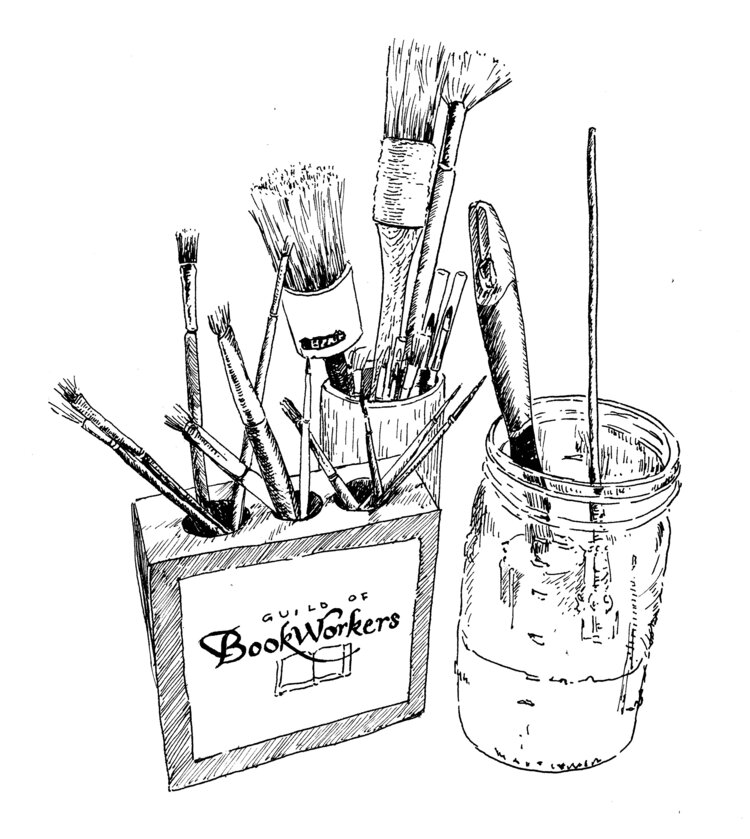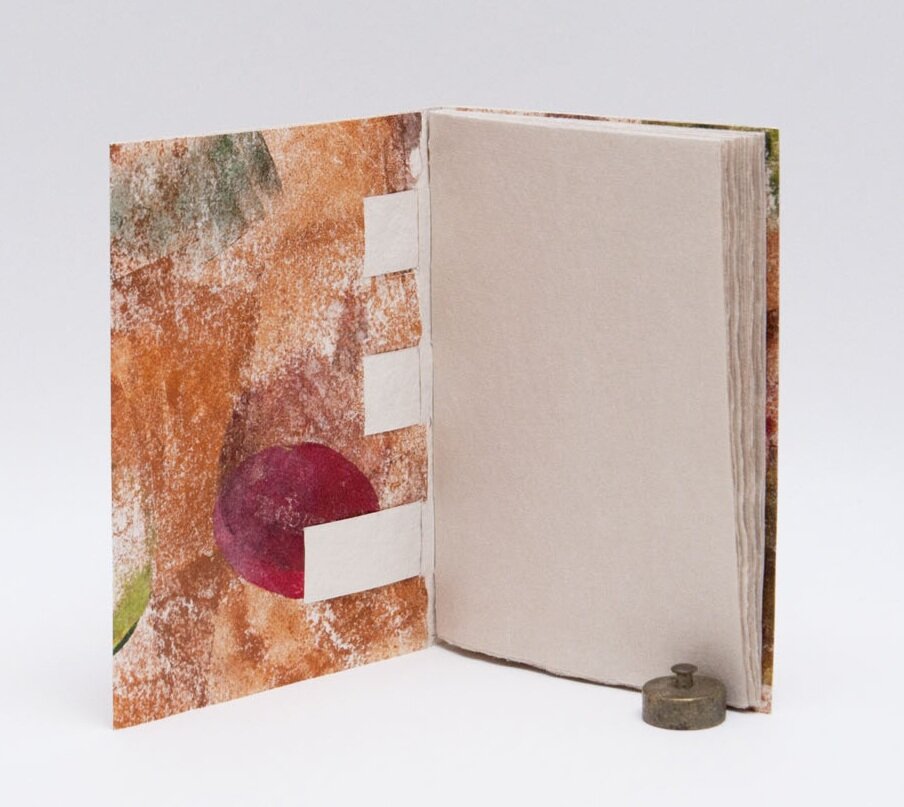Okemos, Michigan
Member for 27 years
Binders' Lettering: A Neglected Art, Colin Franklin
Twinrocker bleached abaca, acrylic monoprint, Irish linen thread.
19 x 14 x 1 cm
Completed in 2020
For Sale - $400
What inspired you to create this work or select this text for your submission
Since this is the 40th anniversary of the New England Chapter, I have been thinking back about my involvement in the Guild and my career in bookbinding. The book I selected was taken from the keynote speech given during the second Standards I attended in 1995 in Tuscaloosa, Alabama. I purchased the text block a long time ago and had forgotten about it until I was going through stuff as a result of being stuck at home during the pandemic. This was too much of a coincidence to ignore.
The lecture is about the often poor quality of titles that binders tool onto their bindings, so I decided to focus on letters in the abstract. The binding is a cross structure made of an old sheet of Twinrocker bleached abaca I've had for years, which has a very textured surface. The title, stamped in black foil, reflects this rough texture and is broken and missing in places. The monoprint background has a random series of letters which is referenced in the lecture.
Eric Alstrom has been involved with the book arts since 1989 when he began his training in conservation and bookbinding in Ann Arbor, Michigan, first at the University of Michigan under James Craven and then at the Bessenberg Bindery. Eric teaches book arts workshops, has had his books exhibited both nationally and internationally and presented at GBW Standards in 2013. Currently he is the Head of Conservation and Preservation at the Michigan State University Libraries. See more of Eric’s work here.




























































